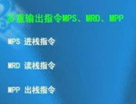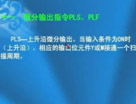linux基础复习(6)文件I/O操作
struct timeval
{
long tv_sec; /* seconds */
long tv_usec; /* and microseconds */
};
select函数根据希望进行的文件操作对文件描述符进行分类处理,这里,对文件描述符的处理主要设计4个宏函数:
FD_ZERO(fd_set *set) 清除一个文件描述符集;
FD_SET(int fd, fd_set *set) 将一个文件描述符加入文件描述符集中;
FD_CLR(int fd, fd_set *set) 将一个文件描述符从文件描述符集中清除;
FD_ISSET(int fd, fd_set *set) 测试该集中的一个给定位是否有变化;
在使用select函数之前,首先使用FD_ZERO和FD_SET来初始化文件描述符集,并使用select函数时,可循环使用FD_ISSET测试描述符集, 在执行完成对相关的文件描述符后, 使用FD_CLR来清除描述符集。
实例
/*select.c*/
#i nclude fcntl.h>
#i nclude stdio.h>
#i nclude unistd.h>
#i nclude stdlib.h>
#i nclude sys/time.h>
int main(void)
{
int fds[2];
char buf[7];
int i,rc,maxfd;
fd_set inset1,inset2;
struct timeval tv;
if((fds[0] = open (hello1, O_RDWR|O_CREAT,0666))0)
perror(open hello1);
if((fds[1] = open (hello2, O_RDWR|O_CREAT,0666))0)
perror(open hello2);
if((rc = write(fds[0],Hello!n,7)))
printf(rc=%dn,rc);
lseek(fds[0],0,SEEK_SET);
maxfd = fds[0]>fds[1] ? fds[0] : fds[1];
//初始化读集合 inset1,并在读集合中加入相应的描述集
FD_ZERO(inset1);
FD_SET(fds[0],inset1);
//初始化写集合 inset2,并在写集合中加入相应的描述集
FD_ZERO(inset2);
FD_SET(fds[1],inset2);
tv.tv_sec=2;
tv.tv_usec=0;
// 循环测试该文件描述符是否准备就绪,并调用 select 函数对相关文件描述符做相应操作
while(FD_ISSET(fds[0],inset1)||FD_ISSET(fds[1],inset2))
{
if(select(maxfd+1,inset1,inset2,NULL,tv)0)
perror(select);
else{
if(FD_ISSET(fds[0],inset1))
{
rc = read(fds[0],buf,7);
if(rc>0)
{
buf[rc]='�';
printf(read: %sn,buf);
}else
perror(read);
}
if(FD_ISSET(fds[1],inset2))
{
rc = write(fds[1],buf,7);
if(rc>0)
{
buf[rc]='�';
printf(rc=%d,write: %sn,rc,buf);
}else
perror(write);
sleep(10);
}
}
}
exit(0);
}













评论